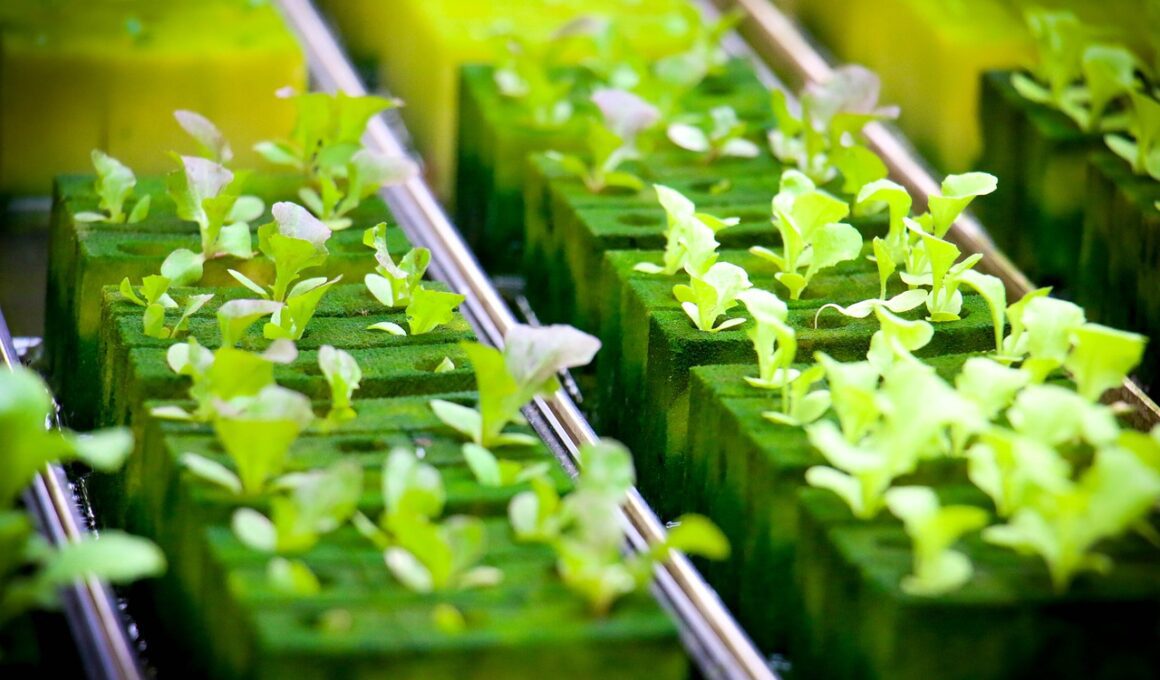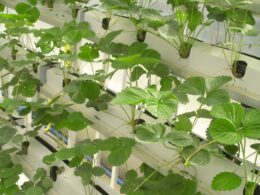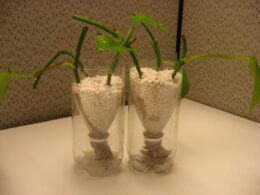Are you curious about the nutrients that are lacking in hydroponics? If you’re considering starting a hydroponic garden, it’s important to understand the unique challenges that come with this method of growing plants. While hydroponics offers many benefits, such as increased yield and greater control over growing conditions, it also requires careful attention to nutrient levels in order to ensure healthy plant growth.
In this article, we’ll explore the micronutrients that are essential for plant growth, and discuss some of the most common nutrient deficiencies that occur in hydroponic systems. We’ll also provide strategies for addressing these deficiencies, so that you can get the most out of your hydroponic garden.
Whether you’re a seasoned hydroponic gardener or just starting out, this article will provide valuable insights into the world of hydroponic plant nutrition. So, sit back and get ready to learn about the nutrients that are lacking in hydroponics!
Understanding Micronutrients
You’re probably wondering what tiny little things you might be missing out on when it comes to growing plants hydroponically. Well, let’s talk about micronutrients and why they’re so important!
Micronutrients are essential elements needed by plants in small amounts. Although they are only required in small quantities, they play a crucial role in the growth and development of plants. Micronutrient importance cannot be overemphasized as they help in the production of enzymes and hormones that aid in the growth and development of plants.
Micronutrients such as iron, zinc, copper, manganese, and boron are crucial for plant health. Deficiencies in these micronutrients can lead to stunted growth, yellowing of leaves, and reduced yields. Therefore, it is essential to ensure that your hydroponic plants have a balanced supply of micronutrients.
Hydroponic micronutrient sources include fertilizers, water supplements, and nutrient solutions. It is important to note that the type and quantity of micronutrients required by plants vary depending on the plant species and growth stage. Always consult a hydroponic expert to determine the right micronutrient balance for your plants and avoid overfeeding, which can lead to toxicity.
Remember, taking care of your hydroponic plants’ micronutrient needs is crucial for healthy growth and bountiful yields.
Common Nutrient Deficiencies in Hydroponics
If you want to keep your hydroponic system running smoothly, it’s important to be aware of the most common deficiencies that can occur and how to prevent them.
One of the most common deficiencies is a lack of calcium. Calcium is essential for plant growth and helps with cell wall development. Common solutions for calcium deficiencies include adding calcium nitrate or calcium chloride to the nutrient solution. You can also use calcium-rich supplements like eggshells or bone meal.
Another common deficiency is a lack of magnesium. Magnesium is necessary for chlorophyll production and helps with enzyme activation. Common solutions for magnesium deficiencies include adding Epsom salt to the nutrient solution or using a magnesium supplement. You can also use magnesium-rich supplements like seaweed or dolomite lime.
Finally, a lack of iron is another common deficiency in hydroponics. Iron is necessary for plant growth and helps with chlorophyll production. Common solutions for iron deficiencies include adding chelated iron to the nutrient solution or using an iron supplement. You can also use iron-rich supplements like fish emulsion or blood meal.
By being aware of these common deficiencies and knowing the proper nutrient sources, you can ensure that your hydroponic system stays healthy and productive.
Strategies for Addressing Nutrient Deficiencies
When addressing nutrient deficiencies in your hydroponic system, there are a few strategies you can use. First, adjust the pH of your nutrient solution to help increase the availability of certain nutrients.
Additionally, supplementing with nutrient solutions can provide your plants with the specific nutrients they need.
Finally, using organic amendments such as compost or worm castings can help improve the overall health of your plants and provide a more balanced nutrient profile.
Adjusting pH
Maintaining proper pH levels is crucial for the success of a hydroponic system. When the pH levels are too high or too low, the plants are unable to absorb the necessary nutrients for their growth and development. As a result, adjusting the pH of the hydroponic solution is essential to ensure that the plants are receiving the required nutrients for their optimal growth.
pH adjustment is necessary because it affects the nutrient uptake of the plants. When the pH levels are not balanced, some nutrients are unavailable for the plants to absorb. By adjusting the pH, you can ensure that the nutrients are available in the right form for the plants to uptake.
Thus, when you maintain the proper pH levels, your plants will have a higher chance of thriving, and you will have a more successful hydroponic system.
Supplementing with Nutrient Solutions
To give your plants an extra boost, you can supplement your hydroponic system with nutrient solutions. There are several types of solutions available, each containing different combinations of essential plant nutrients.
Some popular options include:
-
Complete nutrient solutions: These solutions contain all the nutrients that plants need to thrive, including nitrogen, phosphorus, potassium, calcium, magnesium, and others. They are a convenient and easy way to ensure that your plants are getting everything they need.
-
Individual nutrient solutions: If you notice that your plants are lacking a particular nutrient, you can supplement with a solution that contains only that nutrient. For example, if your plants are showing signs of calcium deficiency, you can add a calcium solution to your system.
-
Organic nutrient solutions: If you prefer to use organic products, there are several organic nutrient solutions available as well. These solutions contain natural sources of plant nutrients, such as seaweed, fish emulsion, or bone meal.
-
Additives: Some nutrient solutions also contain additives that can help boost plant growth and health. For example, some solutions contain beneficial bacteria or fungi that can help improve the plant’s root system.
When adding nutrient solutions to your hydroponic system, it’s important to follow dosage recommendations carefully. Overdosing can be just as harmful as underdosing, and can lead to nutrient burn or other problems. Be sure to measure your solutions accurately and adjust your dosages as needed based on the growth stage and health of your plants.
Using Organic Amendments
Let’s explore how organic amendments can give your plants an extra boost! When it comes to hydroponics, maintaining a proper nutrient balance can be a challenge. That’s where organic amendments come in.
They can help improve the overall health and growth of your plants by providing essential nutrients and microorganisms that are often lacking in hydroponic systems. Organic amendments, such as compost and worm castings, can help increase the diversity of microorganisms in your hydroponic system.
These microorganisms can break down organic matter and release nutrients that your plants need to grow. Additionally, organic amendments can improve soil structure and water retention, which can lead to healthier root systems and better nutrient uptake.
By incorporating organic amendments into your hydroponic system, you can help ensure that your plants are receiving all the essential nutrients they need to thrive.
Benefits and Drawbacks of Hydroponic Systems
If you’re considering using hydroponic systems, it’s important to know both the advantages and disadvantages. Hydroponics offers benefits such as faster growth rates, higher yields, and reduced water usage.
However, drawbacks include increased setup costs, higher energy usage, and a need for precise nutrient management. To maximize the benefits of hydroponics, it’s essential to carefully choose the right system for your needs and to stay vigilant in maintaining the nutrient balance.
Advantages
You can enjoy healthy and fresh produce all year round with hydroponics, and the advantages are numerous. One of the biggest benefits of hydroponic systems is the cost savings. Compared to traditional farming, hydroponics can reduce the cost of labor and energy by up to 50%, making it an affordable option for farmers and consumers alike.
Additionally, hydroponics allows for easy scalability, allowing farmers to expand their operations without the need for additional land. Another advantage of hydroponics is the ability to control the growing environment. With hydroponic systems, you can adjust the temperature, humidity, and nutrients to optimize plant growth.
This means that you can grow crops faster and with a higher yield. Hydroponics also eliminates the need for pesticides and herbicides, reducing the risk of harmful chemicals in your food. Overall, hydroponics is a sustainable and efficient way to grow fresh produce, and it’s a great option for anyone looking to eat healthy and support local farmers.
Disadvantages
The benefits of hydroponics are clear, but it’s important to also consider the potential drawbacks.
One of the main disadvantages of hydroponics is nutrient imbalances. In hydroponic systems, plants receive their nutrients directly from the water they are grown in. While this can be an efficient way to deliver nutrients, it can also lead to imbalances if the correct nutrient ratios are not maintained. This can result in stunted growth, reduced yields, and even death of the plants.
In traditional soil-based growing, plants have access to a wider range of nutrients and are able to naturally regulate their intake. Another potential drawback of hydroponics is plant stunting. While hydroponic systems can provide plants with optimum growing conditions, they can also be too sterile, limiting the diversity of microorganisms that support plant growth.
Without these beneficial microorganisms, plants may struggle to absorb nutrients and grow as they would in a natural environment. In addition, if plants are not properly spaced in hydroponic systems, they can become overcrowded and compete for resources, leading to stunted growth and reduced yields.
Despite these potential disadvantages, hydroponics can still be a viable and efficient method of growing, as long as proper care and attention is given to nutrient balance and plant spacing.
How to Maximize the Benefits
To fully capitalize on the advantages of hydroponic growing, it’s crucial to pay close attention to plant spacing and nutrient ratios.
Nutrient ratios refer to the balance of nutrients that plants need to grow healthy and strong. Hydroponic systems can lack certain nutrients that are present in soil, so it’s important to provide the right amount of nutrients at the right time. This means using a nutrient solution that has a balanced ratio of nitrogen, phosphorus, and potassium, as well as adding micronutrients like calcium and magnesium.
Nutrient timing is also essential in hydroponic growing. Plants have different nutrient needs at different stages of growth, so it’s important to adjust the nutrient solution accordingly. For example, during the vegetative stage, plants need more nitrogen to develop leaves and stems. During the flowering stage, plants need more phosphorus to develop buds and flowers.
By adjusting the nutrient solution to meet the specific needs of the plants, you can maximize growth and yield. Overall, paying attention to nutrient ratios and timing can help you get the most out of your hydroponic system and ensure healthy, thriving plants.
Conclusion and Final Thoughts
So there you have it, the final thoughts on what’s missing in hydroponic systems. While hydroponics is a great way to grow plants without soil, it does have its limitations when it comes to providing all the necessary nutrients.
Plants grown in hydroponics tend to lack certain micronutrients like calcium, magnesium, and sulfur. To maximize the benefits of hydroponics, it’s important to address these limitations by adding nutrient supplements to the water.
Future research opportunities also exist in the field of hydroponics to better understand the nutrient deficiencies and how to address them. Scientists are constantly researching ways to improve hydroponic systems and make them more efficient. With advancements in technology, it’s possible to develop hydroponic systems that provide all the necessary nutrients for plant growth.
In conclusion, while hydroponics may have its limitations when it comes to providing all the necessary nutrients, it’s still a great way to grow plants. By addressing the nutrient deficiencies and using nutrient supplements, you can maximize the benefits of hydroponics.
And with ongoing research, we can continue to improve hydroponic systems and make them even more efficient in the future.
Frequently Asked Questions
What is the difference between macronutrients and micronutrients in hydroponics?
When it comes to hydroponics, it’s important to understand the difference between macronutrients and micronutrients.
Macronutrients are the essential elements needed in large quantities, like nitrogen, phosphorus, and potassium. These nutrients are often provided in specific ratios to promote healthy plant growth.
On the other hand, micronutrients are also essential, but needed in smaller quantities, like iron, manganese, and zinc. However, too much of these micronutrients can lead to toxicity in plants.
By understanding macronutrient ratios and monitoring micronutrient levels, you can ensure your hydroponic plants receive the proper nutrients they need for optimal growth and health.
How do you test the nutrient levels in a hydroponic system?
To test the nutrient levels in your hydroponic system, first check the pH levels using a pH testing kit. If necessary, adjust the pH level by adding pH up or down solutions.
Then, test the nutrient solution using an EC or PPM meter to measure the electrical conductivity of the solution. If the levels are too high or too low, make adjustments to the nutrient solution by adding or removing nutrients accordingly.
Regularly testing and adjusting your hydroponic system’s nutrient levels will ensure your plants have the proper nutrients they need to thrive.
Can hydroponic systems provide all the necessary nutrients for plant growth?
Hydroponic systems are a great way to grow plants without using soil, but they do have limitations. One major limitation is that plants may not be able to absorb all the necessary nutrients they need for optimal growth. Nutrient absorption can be affected by various factors, such as water quality, pH levels, and nutrient imbalance.
It’s essential to regularly test the nutrient levels in your hydroponic system to ensure that your plants are getting the nutrients they need. Although hydroponics can provide many necessary nutrients for plant growth, it’s crucial to be aware of its limitations to maximize your plants’ potential.
Are there any potential health risks associated with consuming plants grown in hydroponic systems?
When it comes to consuming plants grown in hydroponic systems, there are potential health risks to consider. One of the concerns is the possibility of nutrient toxicity, which can occur when plants absorb too many nutrients from the nutrient solution. This can lead to an accumulation of harmful substances in the plant tissue, which can then be transferred to those who consume the plant.
While nutrient toxicity is rare, it’s important to be aware of the potential risks and to ensure that hydroponic systems are properly maintained to prevent any potential issues. Overall, it’s important to prioritize safety when consuming any type of produce, including those grown in hydroponic systems.
What are some alternative methods for addressing nutrient deficiencies in hydroponics besides adding more fertilizers?
Looking for alternative solutions to nutrient deficiencies in hydroponics?
Nutrient supplementation is a great option that doesn’t involve adding more fertilizers. By using organic supplements like fish emulsion or kelp, you can give your hydroponic plants the nutrients they need without risking any health concerns.
Additionally, you can try adjusting the pH levels of your hydroponic solution or using different types of growing media to improve nutrient uptake. These alternative methods are safe and effective, and can help you achieve healthy, thriving plants in your hydroponic system.
Conclusion
So, now you know what nutrients can be lacking in hydroponics. It’s important to remember that micronutrients are just as crucial as macronutrients in plant growth and development.
Common deficiencies in hydroponics include iron, calcium, magnesium, and zinc. To address these deficiencies, it’s important to monitor nutrient levels regularly and adjust accordingly. This can be done by supplementing with micronutrient solutions or adjusting the pH of the nutrient solution.
While hydroponics can offer many benefits such as increased yield and reduced water consumption, it’s important to be aware of potential nutrient deficiencies and take steps to address them.









